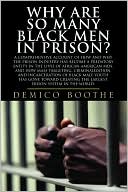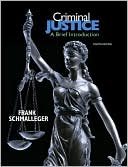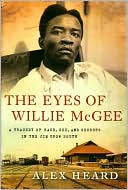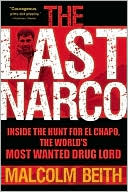Ethics in Criminal Justice
By combining case studies and text, Ethics in Criminal Justice helps students prepare for the ethical situations they will encounter as criminal justice professionals. The text focuses on the morality of the individual professional with an emphasis on Aristotle’s virtue theory to help readers resolve ethical issues. It includes discussions of constitutional and religious ethics along with the more traditional discussions of philosophical and professional ethics. Included in the text are 52...
Search in google:
By combining case studies and text, Ethics in Criminal Justice helps students prepare for the ethical situations they will encounter as criminal justice professionals. The text focuses on the morality of the individual professional with an emphasis on Aristotle’s virtue theory to help readers resolve ethical issues. It includes discussions of constitutional and religious ethics along with the more traditional discussions of philosophical and professional ethics. Included in the text are 52 case studies and numerous discussion questions to help spark classroom debate about ethics in criminal justice.
Part I: Preliminaries1 Introduction: Challenges and ToolsCase 1.1 -- The Counterfeit Counterfeit 20sAccountability and IntegrityWorking AssumptionsThe Challenge and Tools of Moral LeadershipSummaryAnswers to Case Study Questions2 Moral Decision Making: The Logic of EthicsCase 2.1-- When Fred Shot BarneyConclusions, Premises, and Good and Bad ArgumentsDeduction versus InductionTruth versus ValidityFallaciesCase 2.2 Inside InformationSummaryAnswers to Case Study QuestionsPart II: Philosophical Ethics3 Consequentialism Case 3.1--Huck Finn and JimThree Basic TheoriesConsequentialismEgoismCase 3.2 AntigoneCase 3.3 -- The State Trooper and the Injured Truck DriverUtilitarianismCase 3.4 – “The Rebellion”SummaryAnswers to Case Study Questions4 RegularianismCase 4.1 The Judge and the Moral ProblemAdvantagesObjectivityCommon Starting PointAdvanced PreparationUnderstanding OthersShortcomingsBad RulesNo RulesCase 4.2 Towing the BoatConflicting RulesTypes of RulesDivine CommandsCase 4.3 The Protective WifeLawsCodes of EthicsThe Golden RuleUbiquityConsistencyReciprocitySummaryAnswers to Case Study Questions5 DeontologyCase 5.1 The Guilty ClientAdvantagesShortcomingsCase 5.2 Billy BuddWhat Is Duty?Genuine Duty versus Alleged, but False, DutyConflicts of DutyCase 5.3 Sophie’s ChoiceIs Acting from Duty the Only Way to Be Morally Good? SummaryAnswers to Case Study Questions 6 Virtue and Responsibility: An Aristotelian ApproachCase 6.1 The Hit and Run SonTheories of VirtueRawl’s SynthesisThe Feminist SynthesisCase 6.2 The Harassing LegislatorAristotle on VirtueTeleologyVirtue, Wisdom, and HappinessCase 6.3 The Tipsy JudgeVirtue and HabitEthics and MoralsSinThe Good and the Golden MeanCardinal VirtuesIntegrityResponsibilityCase 6.4 The Double DipperAristotle’s View of Responsibility Case 6.5 The Coerced CopExistentialism’s View of Responsibility SummaryAnswers to Case Study QuestionsPart III: Constitutional Ethics 7 LawCase 7.1 – The Abortion ClinicNatural Law TheoryCase 7.2 -- The Supportive RookieCase 7.3 -- The Pot-Smoking GrandmotherCase 7.4 -- The Abusive StepfatherLegal PositivismLegal RealismCase 7.5 A Speeder Gets a BreakSummaryAnswers to Case Study Questions8 RightsCase 8.1 – The Handcuffed CandidateFreedoms and InterestsInalienable Rights versus Conferred RightsPositive Rights versus Negative RightsCase 8.2-- The Warrant That Wasn’tLegal Rights versus Moral RightsCase 8.3 – “Coke can!” The Multiple Meanings of RightsChallenges for Criminal Justice ProfessionalsSummaryAnswers to Case Study Questions9 JusticeCase 9.1 “Give me the gun!”Distributive JusticeCase 9.2 Homeless but HarmlessCommutative JusticeRetributive JusticeCase 9.3 -- Improbable CauseThe Criminal Justice ProfessionsSummaryAnswers to Case Study Questions Part IV: Religious Ethics10 Religious EthicsCase 10.1 -- The Marriage Counseling Police OfficerFoundationsHistoryCase 10.2 -- Taking SidesCase 10.3 -- Speech UnbecomingCase 10.4 -- The BeardFundamental TenetsCase10.5 – Lawful EntryMoral TheologyScriptureTraditionCase 10.6 No Women Police Officers, PleaseCase 10.7 The Sniffing DogExperienceCase 10.8 The Religious Police LieutenantReasonCase 10.9 The ChaplainThe Morality of War Case 10.10 – The Reluctant SniperWar and PeacePacifismCase 10.11 – “NYC Rabbi Organizing Armed Patrols Draws Anger”Just WarHoly WarSummaryAnswers to Case Study QuestionsPart V: The Profession of Criminal Justice11 Professions and Professional Ethics Case 11.1 Far from HomeWhat Is a Profession?Profession: A Traditional DefinitionProfession: An Alternative Definition Case 11.2 When in Rome…Profession: An Ostensive DefinitionCase 11.3 Only a BuckProfessional EthicsCase 11.4 The Maternal RookieProfessional RelationshipsCase 11.5 The Neighborhood Cop Who Discouraged Pressing ChargesProfessional Obligations: The BasicCase 11.6 Florida HurricanesProfessional Ethics As a Balancing ActSummaryAnswers to Case Study Questions12 Ethics in the LegislatureCase 12.1 -- The Consistent CandidateThe LegislatorSignificant Service to the CommunityGreater Responsibilities and RightsCase 12.2 The Lawbreaking LawmakerSelf-GovernanceAutonomyCallingMoney As MeansExtensive TrainingStaff, Lobbyists, PACs, and JournalistsCase 12.3 Quid Pro QuoStaffLobbyistsPolitical Action CommitteesJournalistsSummaryAnswers to Case Study Questions13 Ethics in Law EnforcementCase 13.1 SerpicoPoliceSignificant Service to SocietyCase 13.2 The Funeral of Za Chue XiongGreater Rights and Responsibilities Self-GovernanceCase 13.3 The BackupAutonomyA CallingMoney As MeansExtensive TrainingCredentialingCorrectionsCase 13.4 Sheriff Joe and the AbortionsEthics in CorrectionsThe Ethics of Parole and ProbationCase 13.5 – The Sex OffenderSummaryAnswers to Case Study Questions14 Ethics in the CourtroomCase 14.1 – The Alford PleaThe Adversarial SystemThe JudgeSignificant Service to SocietyGreater Responsibility and RightsSelf-Governance and AutonomyCalling and Money As MeansExtensive Training and CredentialingSummaryThe LawyerCase 14.2 MalpracticeSignificant ServiceGreater Responsibility and RightsSelf-Governance and Autonomy Calling and Money As MeansTraining and CredentialsSummaryThe JuryCase 14.3 The Activist JurorSignificant ServiceGreater Responsibilities and RightsSummaryThe Court ReporterSignificant Service to the CommunityGreater Responsibilities Self-Governance and AutonomyTraining and CredentialsCalling and Money As MeansSummaryAnswers to Case Study QuestionsPart VI: Criminal Justice Ethics in the Future15 Criminal Justice Ethics in the FutureCase 15.1—Seeing through WallsTechnologyDemographicsCase 15.2—Stem Cell Therapy: The Near FuturePopulation GrowthInternational RelationsMediaInfluenceInformation OverloadMoral SignificanceEngagement, Education, and EthicsThe Need for Civic EngagementThe Need for EducationPublic Sector EthicsSummaryAnswers to Case Study QuestionsIndex








